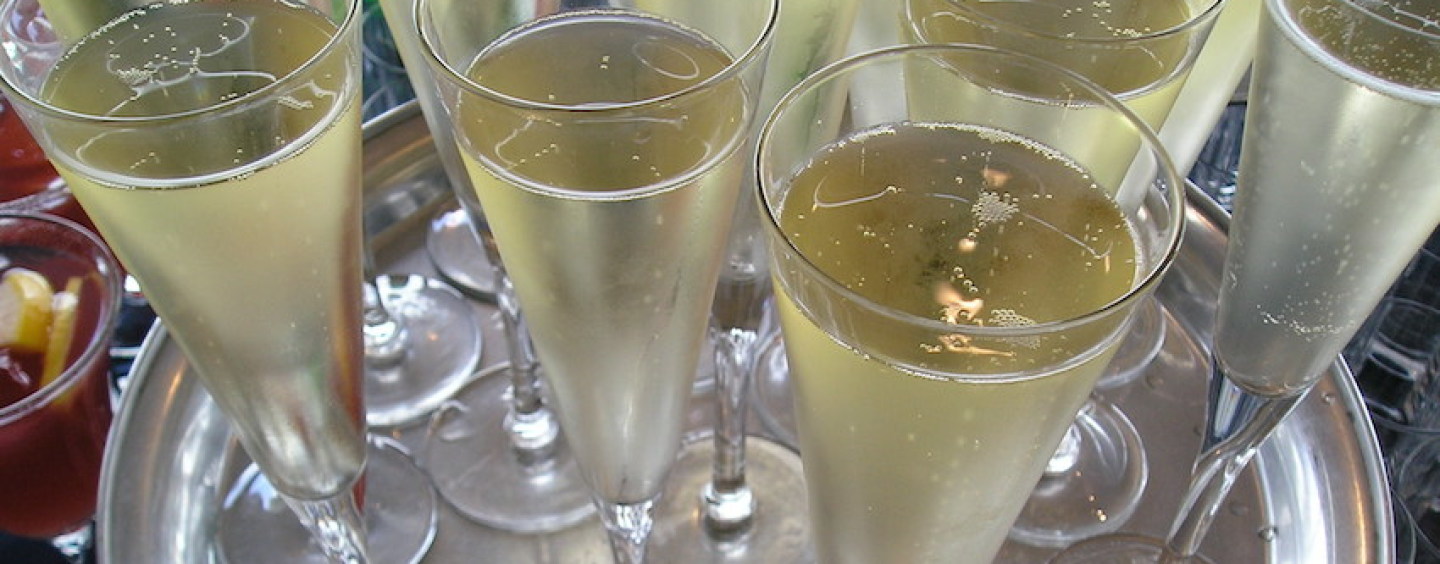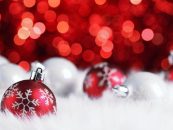You should think that you are awesome for buying Champagne. You have made a great choice and every one will want to be your friend now. You should be safe in the knowledge that everything wrong will be right once again. Champagne does that.
Why is it expensive?
Champagne is from the Champagne region in France. The very unique soil and climate (terroir) coupled with centuries of refinement make a beautifully crafted product. The very cold climate poses numerous threats to harvest, and many vineyards lose up to 30 percent of fruit prior to harvest from frost and pests. The grapes that do survive are so delicate and complex that hand-harvesting is employed so as not to disturb the fruit. Massive effort and 2,000 years of refinement result in a weighty price tag.
Primarily, Champagne is made of three grape varieties. Pinot Noir, Pinot Meunier and Chardonnay. When you see Blanc de Blanc on the bottle, it only has Chardonnay, and if it says Pinot Blanc, it only has Pinot Noir.
But it is not just fermented grapes in the bottle. There is history, love, hard work and a remarkable level of craftsmanship. Please consider all these things when drinking the winemakers’ blood, sweat and tears.
What to eat with Champagne
As with your cooking, remember to keep things balanced. Champagne does not like excesses. Too sweet, too acidic, too bitter, too spicy, or whatever, will not work.
Any fish and crab will go smashingly with any sparkling. No curry or chili. I also find that dill that chefs garnish with will turn your champagne experience into a fit of rolling around then licking the dry wall (watch out for insidious dill!).
However, if you find that your favourite thing in the world is Moet and saltwater taffee, then do it. Forget the naysayers and ne’er do wells!
What is the proper serving temperature?
The general rule is 8 to 10 degrees Celsius. However, in the best place on earth—the sunny Goldie—serve it slightly cooler than the rule, as the ambient temperature will quickly heat the tasty loveliness before you drink it (especially if you are a jabberer and rabbit on, treating the glass like a microphone).
How long can I keep a bottle of sparkles open?
After opening a bottle of sparkles, it will not last more than 24 hours. However, resealing quickly with a Champagne saver will keep the fizz longer—even up to three days. SPOON in the champagne to keep the fizz is an old wives’ tale. Stanford University chemist Richard Zare undertook an extracurricular investigation of the teaspoon’s preservative powers in 1994. The result: Zare and his fellow testers did not detect any boost in the sparkle of the spooned bottles. All aside, best drink the whole thing!
How long can a sealed bottle be kept?
Champagne comes in two categories: non-vintage (NV) and vintage. Non-vintage bubbles can be kept for three to four years, while vintage can be kept for five to ten years on average. A vintage stored well can last indefinitely. Many people show me their pride and joy, a bottle of 1979 non-vintage that they are saving. I hold back the tears, say nothing and just imagine it was a vintage.
How will I know if the Champagne is corked or off?
The Champagne region is in constant revision to prevent cork taint, described as resembling a moldy newspaper, wet dog, damp cloth, or damp basement (or just ewwww!). A Champagne that lacks beads (bubbles) and is dull on the palate is another sign of an inferior bottle. Sunlight and incandescent light are the enemies, along with loud noises and vibration. So do not yell at your sparkles!
How much should I spend?
The world of Champagne is vast, and your favourite is waiting for you. Starting at the top, Krug Champagne will set you back $400+ for a vintage, all the way down to some small producers creating champagne for $20. I suggest starting with a Bollinger for $79.99 as the proverbial toe in the water. The best thing to remember is that the more you spend, the finer the beads will be—the smaller the beads, the smoother and higher-quality the Champagne.
Why does too much sparkles give me a headache?
The quickest way known to man to give yourself a headache with Champagne is to drink it in a hot spa. Champagne is 12% alcohol volume and will do the same damage as red or white wine. It is, however, not as easy to overdo it with a vintage Champagne because you have to have considerable coin to open that second bottle of $280 lovely.
That’s not Champagne!
Champagne is from France, but it is made elsewhere too. In Italy, it is called Prosecco and has a great dry, bright flavour. In Australia, it is Sparkling White of the likes of Jansz, Croser and Chandon. There is another French amazing from the Burgundy and Alsace regions called Crémant. They do not carry a Ferrari price tag. For around $30, you can buy a beautiful French sparkle.
Which Champagne should I smash on the side of my new boat?
Bollinger! It does not have to be a new boat. I smash one on each launch. Make sure to buy two bottles!
2 Prosecco: Chris next choice (price-wise) would be a Prosecco. A Sancol Prosecco at $22 is full of win and awesome. A Prosecco is a light, fun and non-serious drop that outsold non-vintage Champagne for the first time in Europe in 2015.
3 Bouillot Cremant: Try a Louis Bouillot Cremant De Bourgogne. For $26, it will rock your wallet and palate. The bottle looks great on any table. [/acc][/accordion]
By Chris Morgan






























